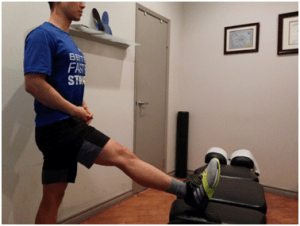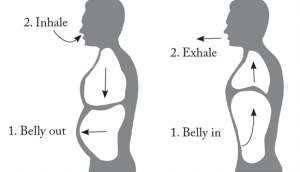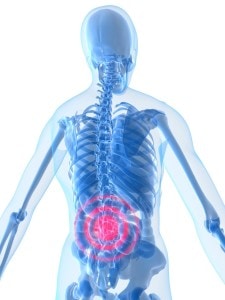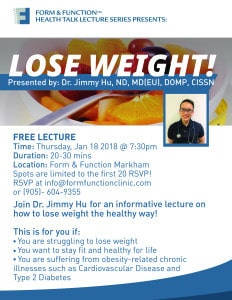The Mind Muscle Connection

When you lift in the gym you’re working with a progressive overload principle. You want your muscles to perform some work and eventually fatigue, so when you recover from your session in the gym, your muscle grows so that the work becomes easier. To maximize muscle growth, there’s something that most people are missing. The Mind Muscle Connection. Focus on the muscle being trained as it increases activation of the target muscle. Concentrate on what you are doing and be present in the moment. This is mindfulness at its best. There are a number of distractions in the gym. Your phone. The TV. Your last business meeting. It’s distracting and unproductive. Lifting the weights is just a means to an end. How well you contract the muscles and how much the rebuild is what training is all about. Try these 3 tips to build a better connection with your muscles.
- Cueing Mantra
- Use a few impactful words to help you with each and every lift. Each lift has a few phases. Getting into the start position. A good middle position. Performing the lift with intent. Figure out what your weaknesses or mistakes may be and focus on eliminating those. For example, when doing a deadlift:
- Back. Drive. – Tighten your core muscles and increase your intra-abdominal pressure. Pull your shoulderblades back and down. Drive through the ground.
- Mini-Goals
- Make minigoals that are objective, challenging and attainable but focused on each set. Use your imagination here. An example is a performance goal. Setting a total-rep performance goal at the beginning for your training session may give you the drive to push the last few reps out at the end of your session. Make sure to pick the right exercise and a rep range you can handle. Keep lifting until you hit it! Don’t overwhelm yourself with a million deadlifts, instead try 100 pushups as an adjunct to your chest days.
- Keep it slow and simple
- Don’t rush your reps. Don’t simply go into a set to get the set done. Take your time and make every set count. Focus on each and every rep, your muscle and how your body feels in response to the rep. Let’s use the bench press as an example. After you lower the weight to hit a precise point directly above your chest. Take a second or two, live in the tension, concentrate on your chest and press the weight back up. Take a moment to reset the tension in your chest at the top, focus again and lower it to the same exact point. Eventually this will become part of every exercise you do. Stay focused, forget the work you have to do, cut the distractions out and focus on the task at hand and your training sessions will be more productive and you’ll leave the gym in a mindful state.
Lift with proper form!
The main thing that will provide safe form when it comes to lifting is the idea of maintaining a “lumbar lordosis”. The region called the lumbar spine starts just above the lowest ribs that you can feel on your back and ends approximately at the top of the buttocks. When most of us stand, it can be seen that this area is curved (with the concavity facing back) When we simply bend at the waist this curve starts to reverse, which raises the pressure in the discs (the gel-like mass between the vertebral bones). Placing an object of substantial weight in one’s hands adds to this pressure. So how do we lift to avoid this?Get close to the object with your legs shoulder width, or a bit more, apart. Lower your body while keeping your back relatively straight…you will lose your lordosis only slightly as you go down. Test the load to see how heavy it is by just picking it up less than an inch. Now you are ready for the lift itself. Place the load in your arms comfortably and even before you start to go up, pull it as close to your pelvis and belly as you can. By pushing up using your strong thigh and buttocks muscles and keeping your back as straight as you can, execute the lift.
Stretch your hamstrings!

Don’t forget to stretch your hamstrings! Oftentimes low back pain is caused by increased tension in the hamstrings. This in turn shifts the pelvis into ‘posterior pelvic tilt’, placing the low back into a vulnerable position. To do the hamstring stretch, find a surface at roughly knee level, and with your leg straight, place your heel on the surface and hold that position for 45 seconds at a time. To feel a greater stretch, stand upright, maintaining all the curves in your spine.
Health Tips for Healthy Weight Loss

Delicious food may be tempting over the holiday season, but do try your best not to binge over meals. There are no miracle pills nor quick-fix solutions for weight loss. A successful weight loss plan requires acceptance, willingness, patience and dedication. You want a weight loss strategy that is sustainable over the long-run. The truth is, you cannot out-exercise a poor diet. Your food and nutrition choices are the key factors toward building a healthy body and a slim waistline. Follow these 5 tips to help you jump-start your weight loss journey:
TIP #1: Begin each meal with a glass of water and aim to eat until you are 80% full. Don’t worry, you’ll have another chance to eat at your next meal.
TIP #2: Make it a routine to exercise at least 30 minutes, 3-5 times a week, with moderate intensity (enough to break a sweat). We often treat exercise as a burden, but it shouldn’t have to be that way. You are making the best investment of a lifetime, which is your health.
TIP #3: Track your calorie in’s and out’s with a convenient smartphone app such as MyFitnessPal, Lose-It, or Lifesum. Knowing what you are consuming and expending will let you know how healthy your food budget is. It will also help you make the adjustments you’ll need to reach your fitness goals.
TIP #4: Eat less C.R.A.P.: Carbonated beverages, Refined sugars, Artificial additives/sweeteners, Processed foods.
TIP #5: Eat more F.O.O.D.: Fresh vegetables & fruits, Organic proteins, Omega-3 fatty acids, Drink more water.
Always consult with your primary care provider before taking anything that could potentially affect your health. Book an appointment with a Naturopathic Doctor to begin your weight-loss journey and learn how to stay fit for life. Stay connected for upcoming health talks about healthy weight loss and becoming the best version of yourself.
Athlete’s Foot
Athlete’s foot is a fairly common foot condition and is a fungal infection of the skin on your feet. While it can easily be treated with prescription anti-fungal creams, you want to avoid it if you can. Fungus thrives in warm, moist environments. Avoid walking barefoot in communal areas such as swimming pool decks and locker room change rooms. Wash your feet daily using soap and water, ensuring to dry well in between the toes. If your feet have a tendency to sweat a lot, use rubbing alcohol and a cotton ball to swab between your toes.
Contact us to book an assessment today!
Stretching at Work

You might need to step out of your comfort zone to do some stretching at work but I assure you that you won’t regret it. For the majority of us, we sit at a computer for most of the day and do the worst thing ever for our body. We are still and inactive but also carry poor posture so we can be comfortable at our desks. What you have already noticed is with prolonged sitting these little aches get a lot worse and can cause significant pain for some people.
When we sit with poor posture what we are doing is straining the neck and upper back. This is caused from holding a certain position for a long period of time as well as not continuing to be active throughout the day.
Below are 2 very effect stretches you can do as your sitting at your desk to give you some relief. First is a simple seated sideways bend of the neck. Here you pull your ear towards the same side shoulder giving your neck nor mobility and less tension.
Second is forward neck stretch where you grip the back of your head, gently pulling your chin into your chest giving the back of your neck and your upper back a nice deep stretch.
These simple stretches should help you with reducing some pain and gaining mobility as your sitting at your desk.
Breathing

It’s funny but breathing is something we do all day every day but people can be doing it “wrong” (For the record, there isn’t a wrong way to breathe, just less efficient ways). To breathe more efficiently, you want to breath diaphragmatically. Here’s how:
- Relax your body, especially the neck and shoulders
- Place one hand on your stomach
- Breath in through your nose and feel your hand expand outwards
- Breath out through your mouth and feel your hand sink back towards your spine
This is the most efficient way to breathe. Take a look at your breathing in a mirror. If you are not using your belly but using your chest and neck muscles to breathe, you are using the wrong tools for the job. Try diaphragmatic breathing to relax those chest and neck muscles or just to breathe more efficiently.





